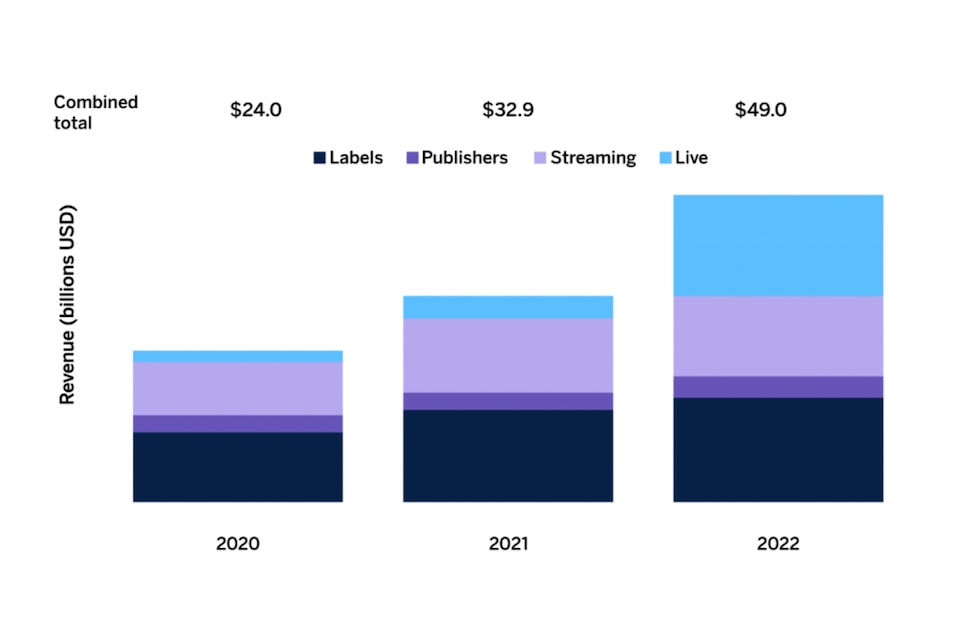As music fans, we know its power to connect us, lift our spirits, make us dance and even cry like no other art form can. Beyond entertainment, it is part of our culture and a driving force for economic growth. According to the latest report from Entrepreneur magazine, the music industry contributes $170 billion to annual GDP and supports 2.5 million jobs just in the United States.
Although in the last 15 years it has undergone a radical transformation with the proliferation of media and streaming. As the sector continues to expand and evolve, so do opportunities for full and great benefits, thanks to the power of discovery.
At BBVA New Gen, we have tracked the performance of the main record labels, publishers, suppliers and services around the world to provide a holistic view of how the music business is evolving in terms of music creation and experiences, exploitation rights, digital distribution and live performances. How will the industry develop in the coming years? Let’s dwell on a few aspects here.
Blockchain, Web3 and the Metaverse:
First, potential cases of use of Blockchain, Web3 and metaverse: transferring control from centralized entities to builders and users can also act as a democratizing leverage on content consumption. Indeed, we have already witnessed the beginnings of something bigger: Crypto.com and its latest agreement with Fantagio, MTV creating a virtual space in Roblox as part of a new category of awards, or the new album by Muse, Will of the People, which will be launched as an NFT.
The number of context-based music services (TjDj, Smule, TikTok) is growing alongside access-based services (Spotify, YouTube, iTunes), and quite often these platforms provide access and, at the same time, a wide range of functions that allow users to do things with music.
Switzerland, a winning formula
Switzerland has the perfect recipe to stay on the podium as a financial capital - and to go further. The tradition, innovation and sophistication of its private banking attracts investment.
Royalties
Of course, when it comes to accessibility, it is unavoidable to discuss intellectual property. In the securities market, vehicles such as Hipgnosis Songs, Fund Royalty Exchange and Songvest allow investors to obtain a share of the payments of rights whenever a song is broadcast, played or used in an advertisement or film, and even to bid for intellectual property rights auctioned by artists, independent labels and publishers.
One of the reasons why the music industry is so attractive is that its performance has low correlation with other financial securities. To illustrate, even at the height of the pandemic, when live performances were largely disrupted and global markets were volatile, people continued to listen to music.
Distribution and software services:
If distribution and software services continue to grow in importance, music companies will have to add yet another competitor to their existing ones, and perhaps new business areas as well, in order to capture the growing value created by context-based music services.
Music media sales by segment (2020-2022)


